
Please install a more recent version of your browser.
21 September 2023
7 minutes read
On September 23 and 24 design platform FOR THE NOW (previously known as Contemporary Design Market) presents two new 'binôme' projects during the Brussels Design September festival. With these collaborative projects FOR THE NOW encourages experimentation by fostering dialogues between designers and creatives from various backgrounds and identities. This year the platform brings together two duos from different cultural backgrounds: Naomi Waku & Marijke Jans and Gillis & Aniss.
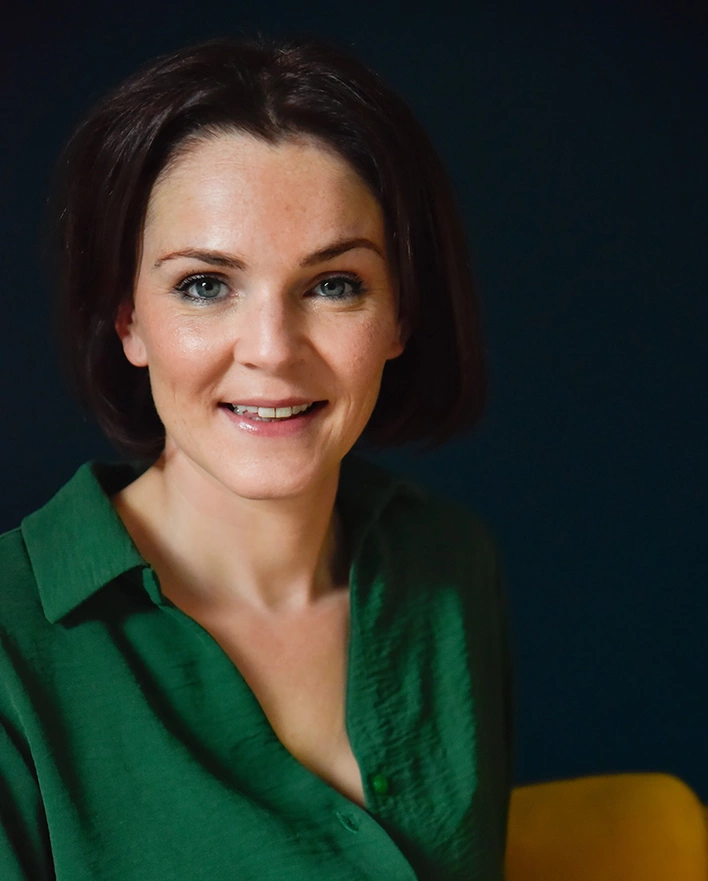
Marijke Jans
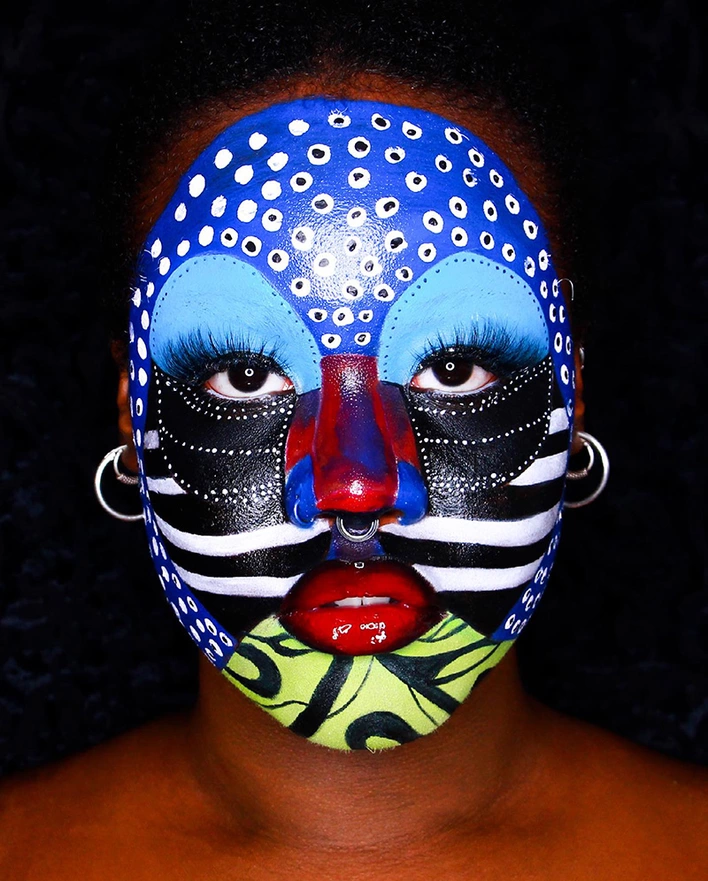
Naomi Waku
We were brought together to join forces for the binôme project of this year FOR THE NOW, to investigate where our common grounds are as two different identities with different backgrounds, different lives and different fields of work. And to find connection as human beings where a creative process serves as a catalyst.
We both use our emotions as a fuel to our art, it really brought us together throughout this whole process. By talking about our lives and recognizing similarities in the midst of the differences our connection grew. Our work is fueled by the way we experience and use emotions. Once we got there, feelings transcended even our words.
It was a journey with highs and lows. Since we are both driven by our guts, we created as we go and we discovered each others freedom and boundaries. When you want to search in depth who the other person is and what you have in common to work around, the best way is to sit down and talk. Sharing more than you would to a person you don’t really know means you have to take on a rather vulnerable position, and we both felt that we had to do something with that vulnerability. We got very inspired by the theme of mental health, it resonated deeply with the both of us. But once we had to translate it into an object we got stuck for a long time. The final design in the end came to life very organically by making drawings and maquettes and changing up until the last moment when it didn’t feel right.
We created a series of objects, a collection of vessels, a lighting object and wall sculptures called 'the cage'. The cage wants to depict what happens in oneself in a state of depression and what depression looks like, as we both wanted to work around mental health. A lot of people suffer continuously from depression and often it goes unnoticed. We wanted to create objects that are extra visible, that take up enough room in a space because of their appearance, to demand attention for this problem and visualize how the true inner color gets surrounded by darkness when depressed.
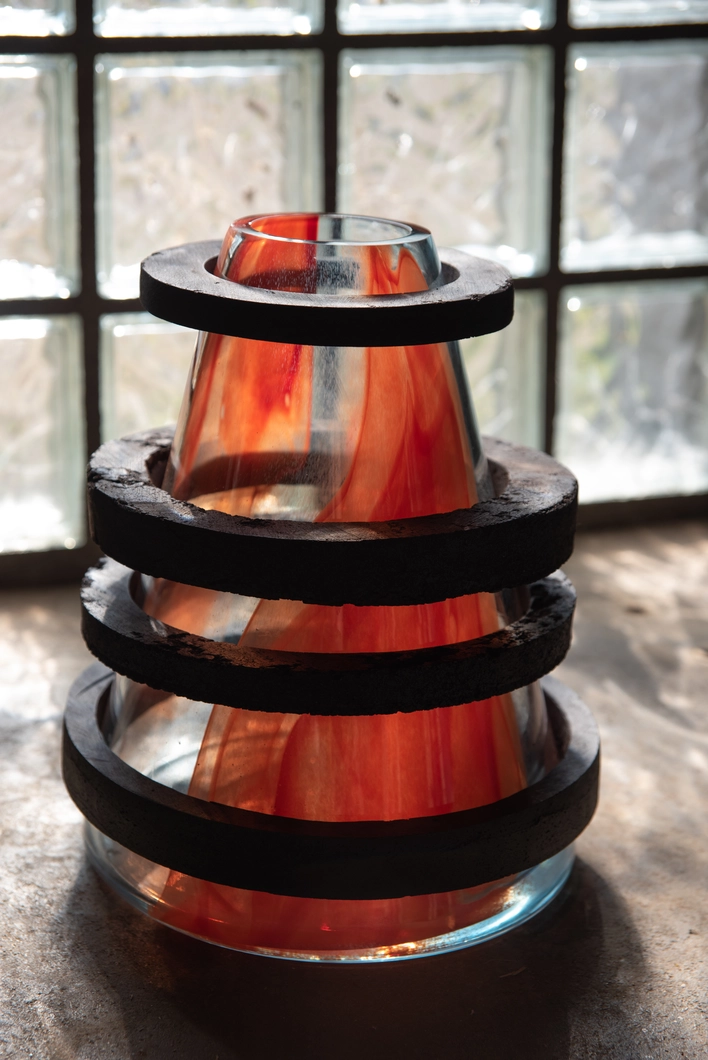
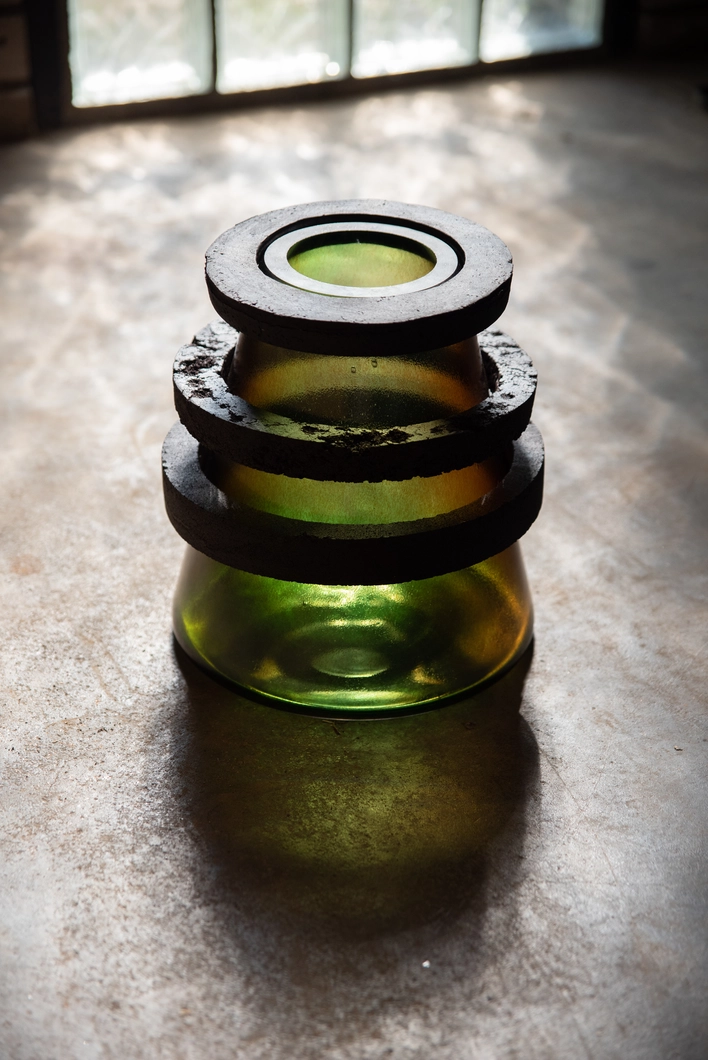
Naomi: I learned that I like to create with someone, I enjoy the process of brainstorming and such. I also learned to work around someone else rhythm.
Marijke: How inspiring it can be, working with somebody who has a totally different background — in the most broad version possible — and to find that when opening up you get to a deeper level of connection where you as human stand for, a connection that is larger than work, background and culture.
Naomi: For me just entering the world of design itself, for an artist like me who didn’t know a lot about it, was quite the shit.
Marijke: When working with somebody who is not a designer, everything gets questioned. You lose your frame of reference and have to let go of what you think design should look like. By questioning everything and making sure we both agreed on every decision along the way, we ended up with objects that bring new frames. It makes you grow as a designer, but also as a human being.
Naomi: As a black woman just dipping a toe in the design industry I can’t really say much other than I’ve observed that it’s quite white from what I’ve seen so far.
We both agree that we are happy to have had this experience together. We're both living very different lives and tackling different industries, the best thing we can do now for each other is to support each other as much as possible! However, in the creative process we got sparked a lot by each others point of view, so we could come up with a lot of new stuff in the future. But today we are very excited to see how this first project is going to be received. Let's go from there.
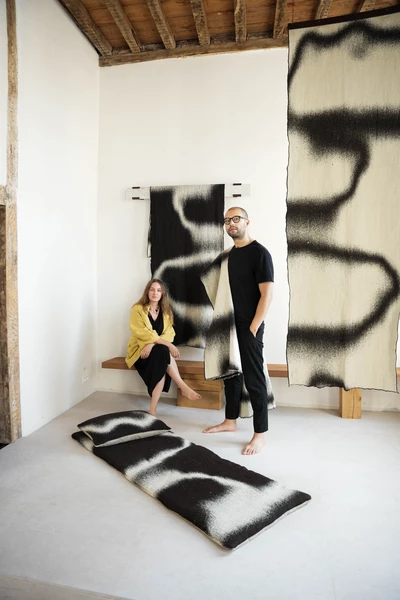
An Gillis & Nabil Aniss
We think we were introduced because we have different artistic practices, histories and identities. Flanders DC has a desire to deconstruct a far too homogeneous and orthodox field of design, and started the binôme projects to create a new language that questioned this.
In the end, despite the fact that we are different, we discovered that many of the things we didn't know about each other brought us closer together — perhaps an allegory for all dysfunctional social relationships today.
We discovered that our work was structured in both form and content, and that what we were ultimately doing was searching for and resurrecting things that had disappeared, been hidden or destroyed.
Like every creative process, it was chaotic. And because we didn't have a strict brief, we could do anything, create anything. So we went through a big phase of idea generation and panic. When everything is possible, nothing is possible at the same time. But a photo of the Haïk, which is an object/garment woven in the Anti-Atlas mountains of Morocco, settled everything. The minute we saw the photo, we knew this is what we wanted to do. A creative discussion followed and we rethought the visual aspect, the form, the use and the production. Then we discovered that Belgian wool had all but disappeared, and decided to recreate the whole production chain, which wasn't easy.
Al Khat, an object based on the lost history of the Haïk, combines a low sitting object, a garment, and an artwork that resists overconsumption. Al Khat is made from Belgian wool and the graphic work (painting and abstract photography) is woven on a Jacquard loom, referring to Flemish tapestry history.


That the universal often depends on the particular, and that differences are superficial, but when the effects of creation take over, there are no more differences, what only matters is a desire to move together towards a desired creation. Perhaps, another allegory…
In terms of content, by displacing an object from its time-space, placing it in a contemporary context that questions both the issue of its disappearance and the condition of its existence in a country that has a different approach to objects.
And in terms of form, the recreation of a production chain that has disappeared for mercantile reasons, to question why we make aesthetic choices that are ultimately nothing more than financial and neo-liberal choices.
Then there's the question of encounter: will this object speak to the orthodox public, and will it attract a heterodox audience?
The question of white hegemony is an interesting one, but we don't think we should take the wrong line. We think it's the role of structures and institutions to unlock a field that has long been monopolized by a small group of people. But precisely because it's a structural issue, we don't think it's an individual responsibility, let alone that of two artists, to sort it out. It's probably the multitude that will do it, and that takes time, because there's always internal resistance to change.
A lot of research, a list of potential ideas and creations, and some bottles of Gamay.
FOR THE NOW is a curated presentation and sales platform for both established and emerging Belgium based designers, working across design disciplines and with a variety of mediums. It is a unique opportunity to discover new design, meet upcoming talents, and to acquire authentic design pieces. FOR THE NOW is an initiative of Flanders DC & Brussels Design September, and takes place on September 23-24 in Gare Maritime, Tour&Taxis Brussels. More info via the website.
Cookies saved